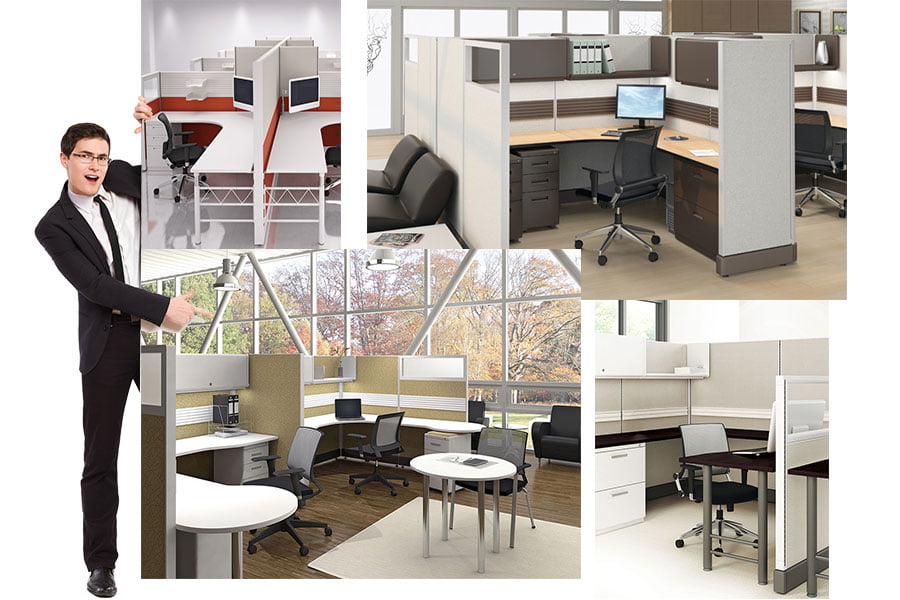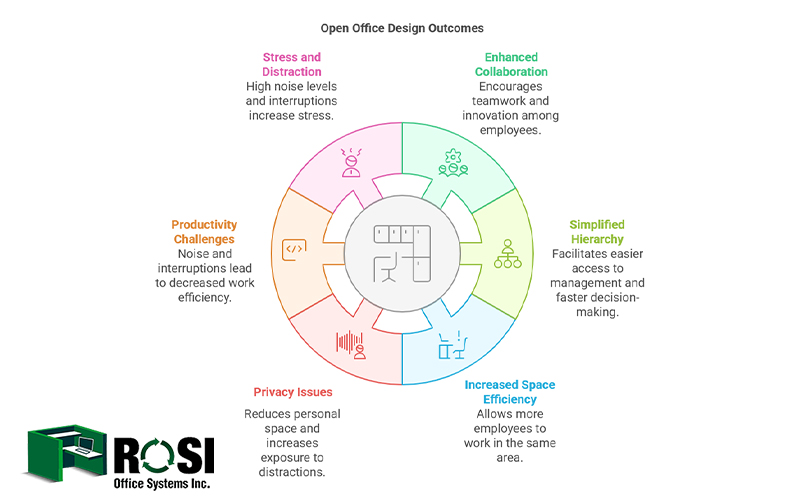
Office Design: Collaboration or Privacy?
Along with the changes that have occurred in recent years in work styles and office spaces, traditional fixed models cannot be used anymore.
For this reason, in today’s business world, one of the biggest challenges for office space designers is to create a balance between private space and collaborative space.
Because teamwork and having private space are both necessary for focusing and completing tasks.
Each of these types of workspaces has advantages and disadvantages, and every business must decide on the type of work style it has.
The International Management Facility Association states that nearly three-quarters of employees in the United States are currently working in open floor plan offices.
The Advantages of Collaborative Office Design
An office without walls allows employees to easily interact and collaborate. This collaboration can lead to innovations that could really add to a company’s bottom line.
Many high-tech companies have embraced the open office concept and it’s hard to argue with the innovations that have come out of Silicon Valley.
Also, in open-concept offices, employees can easily access managers and colleagues due to the absence of walls and partitions.
In this case, the organizational hierarchy becomes simpler, information is exchanged faster, and decision-making is made more effective.
Transparency in access to information makes all employees aware of the status of projects, organizational goals, and changes in strategies, and they gain a better understanding of the organization’s processes and decisions.
As a result, employees feel a greater sense of commitment and belonging to the organization.
Another advantage of an open floor plan layout is that it allows employers to fit more employees in the available office space.
According to a General Services Administration report, AT&T saved over $500 million in real estate costs the first year they eliminated offices.
But, before you start tearing down walls and reconfiguring your office space, consider that an open office isn’t always the nirvana that facility managers envision.
You Might Also Enjoy: Your 2025 Guide to Buying Used Office Cubicles
The Disadvantages of an open floor plan offices
Companies that have shifted from private office cubicles to an open office environment have reported issues resulting from a lack of privacy.
An office without walls can make it difficult for employees to focus on tasks that require deep concentration.
Consider that, if a computer programmer is interrupted in the middle of a coding job, it may take up to 30 minutes to re-establish the necessary level of concentration to fully re-engage in the task.
Other issues associated with open floor plan offices include increases in stress, an increase in noise levels, and even a reduction in employee interaction.
Employees may avoid having conversations with supervisors or even other employees because they perceive that their conversations are easily overheard or are viewed as non-productive or disruptive.
Therefore, in open offices, confidential or sensitive organizational information may accidentally be heard by other employees.
This situation, especially in noisy environments or when people are frequently talking and exchanging ideas, can lead to security and privacy risks, which can cause a lot of stress for people.
One of the disadvantages of open offices is that in the long run, it negatively affects employee productivity.
Because in these environments, employees are constantly exposed to noise and distractions, which can lead to a loss of productivity.
At first, these disruptions may not seem like a big problem and you may think that employees will be able to cope with them, but over time, these factors can gradually cause fatigue and reduced concentration.
This situation can gradually reduce motivation and lower the quality of work.
So, how can an office manager facilitate the perfect balance between collaboration and privacy?
Here are a few ideas:
- If you decide on a cubicle system, smaller footprint systems can still increase the headcount within your available space. Designing cubicles so that employees can see people approaching helps protect their sense of privacy.
- Partial walls using sound-absorption materials help cut down the noise level within the office. Also, white noise systems have been shown to help employees concentrate while conversations are still going on nearby.
- Using office cubicles for office space with a few break-out shared spaces for collaboration offers the best of both approaches. Cubicles provide a space for more concentration and privacy while open areas with team desking or conference rooms allow employees to work together when doing so will be beneficial to their projects.
ROSI offers free office space planning and design to all of our prospective customers. Our trained staff creates 2D and 3D drawings to maximize square footage and support business objectives.
Our goal is to create incredible workspaces that boost productivity while upgrading the look of your office environment.
Contact ROSI Office Systems today to get started building your new workspace!

John Ofield is a recognized expert in the office furniture and office cubicle industry, with over 40 years of experience. As the founder of ROSI Office Systems, he specializes in space planning, custom cubicle designs, and high-quality commercial furniture. John’s expertise helps businesses enhance productivity and collaboration. He is also dedicated to mentoring entrepreneurs and redefining workspaces to inspire success.



